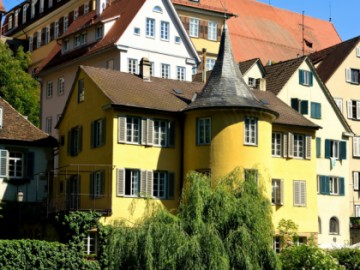Tübingen - Young Charm of the Old Town
Tübingen takes pride of place among the five classical «university towns» of Germany. It can be definitely called a university town. However, it does not mean that tourists will be bored here. Various festivals and events like a traditional race of rubber ducks in October will make their stay here joyful and memorable. Another attractive feature of Tübingen is a genuine, and not restored architecture. Today's tourists have a unique chance to see the town as it was seen by many historic figures.
Cafes, bars and restaurants in Tübingen
See all
Restaurants

Aspendos
Restaurant • Bar • Café • Catering
+49 7071 364342
Payment methods:

Café im Hirsch
Restaurant • Patisserie • Gelateria
+49 7071 24134
Payment methods:

El Pecado
Grill bar
+49 7071 8598229
Payment methods:

Japengo
Restaurant • Bar
+49 7071 368806
Payment methods:
All sights in TübingenSee all
Landmarks in the city Tübingen

Burse
Architectural Monuments

Bebenhausen
Architectural Monuments • Museums and Exhibitions

Hohentübingen
Architectural Monuments • Museums and Exhibitions • Castles, Fortresses and Palaces

Town Hall
Architectural Monuments

Cotta Haus
Architectural Monuments

Hölderlin Tower
Museums and Exhibitions

Town Museum
Museums and Exhibitions
Nearby






 Castles, Fortresses and Palaces
Castles, Fortresses and Palaces
 Museums and Exhibitions
Museums and Exhibitions
 Architectural Monuments
Architectural Monuments